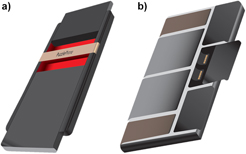Article contents
Impact of modularity as a circular design strategy on materials use for smart mobile devices
Published online by Cambridge University Press: 05 December 2019
Abstract

There is a huge variety of modular product designs for smartphones (concept studies, prototypes, products on the market), and a similarly high variety of circular economy aspects related to these different design approaches. Modularity requires initially more material input but pays off as the consumer is embracing the possibilities of modularity. Key materials for modularity features are gold, beryllium, and neodymium, etc.
On the example of smartphones modularity as a strategy for circular design is analyzed in detail. Modularity of products is a design trend, which is supposed to facilitate reparability, recyclability, and/or upgradeability. However, modularity requires some design changes. The most evident design change is the need for connectors to provide mechanical and electrical contact between individual modules. Depending on the nature and use scenario of a connector reliability, robustness, wear resistance, and non-reactive surfaces are required. The paper explains different modularity approaches for smartphones, some of these being already available in the market, others are still in a conceptual phase. Analyzing technologies for modularity leads to a group of “modularity materials,” which are essential for such circular design approaches, but at the same time are among those materials with a large environmental footprint or limited recyclability. A life cycle assessment of a modular smartphone shows a roughly 10% higher environmental life cycle impact compared with a conventional design. This needs to be compensated by reaping the circular economy benefits of a modular design, i.e., higher likeliness of getting a broken device repaired, extending the lifetime through hardware upgrades and refurbishment.
- Type
- Review Article
- Information
- Copyright
- Copyright © Materials Research Society 2019
References
REFERENCES
- 11
- Cited by




